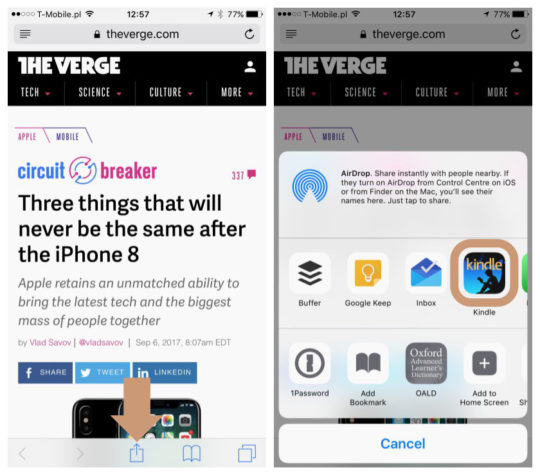
Kindle For Mac Book Pro
Simple interface, fast files’ opening, smart and convenient tools let you feel the atmosphere of the majestic classical scores, dynamic rock ballads or good old jazz. Torrent for mac transmission. Support of the main musical formats such as MIDI and MusicXML allows you to easily listen and practice your songs and compositions created earlier.
After I detailed the ins and outs of the on Thursday, I got a letter from Macworld reader Gerald A. Wingrove, who is intrigued by the Kindle but unclear how it works with his Mac. Since this is Macworld, after all, I thought it was worth a refresher about how the Kindle and the Mac interact. Gerald writes: Over the years I have made great use of the free books available on the Gutenberg website.
Is there a way to read Kindle ebooks on my Mac or PC system? You’re right that while the experience of reading an ebook on a Kindle — especially the new Kindle Fire — is nice, it does require you buying an expensive electronic device in addition to whatever gizmos you already have now. I am transferring files from an older mac book pro with a shot logic board. We can still see the files and have hard drive up on new mac book pro using firewire/target disc mode, can see all files whe.
Is it possible, with a Kindle via the internet, to take onboard for reading, books from Gutenberg? As the Kindle has a USB port, is it possible to connect it to the G5 and have it appear on the desktop, so that PDF and MP3 files can be dragged and dropped into it for reading and listening to?
Is it possible to buy and use a Kindle without getting ones self tied into the Amazon spider’s web? The Kindle’s been around so long, I didn’t really consider how a lot of people have never seen one and plenty more have never attempted to attach it to a Mac. So let me clarify matters a little. Yes, the Kindle has a USB port. (In fact, the USB port doubles as a charging port—the Kindle power adapter is a plug with a USB port and a USB cable!) Plug one end of that USB cable into a Mac and the other into a Kindle, and the Kindle will announce it’s entering USB Drive Mode. A new volume, called Kindle, will appear on your Mac. You can open it up and see the files inside.
The key folders inside the Kindle volume are audible, documents, and music. The audible folder is where audiobook files from audible.com live.
Music is a place where you can put MP3s and then play them back while you’re reading, and even listen via the Kindle’s headphone jack! But the most important folder is documents: this is where all your books, newspapers, and magazines live. If you’ve bought stuff from Amazon and downloaded it onto your Kindle, you’ll see that stuff in the folder. But you can also drag book files right from your Mac into that folder, assuming that they’re compatible with the Kindle. Kindle only reads books in the Mobi, PRC, and plain-text formats. (You can also drag in PDFs, but I generally don’t recommend it.
Kindle does a bad job with PDFs.) The good news is, Project Gutenberg and many other ebook resources offer downloads in a Kindle compatible format, usually Mobi. Some independent ebook sellers, such as, also sell books in Kindle-compatible format. To copy a book to your Kindle, just drag the file into the Documents folder, eject the Kindle from your Mac, and unplug the USB cable. The book should automatically appear in the list of books on your Kindle. (This is also a great way to add things to your Kindle when the Kindle itself can’t get a data connection.
During a trip a while back, my Kindle couldn’t get wireless service but my MacBook was on an wired hotel network. Amazon lets you download books and newspapers directly from the Amazon website’s “Manage My Kindle” section and then drag them onto your Kindle via USB.) So what if you’ve got a book that’s in ePub format, which the Kindle won’t read?

Download the free app and use it to. This open-source app isn’t easy to use, but once you figure it out, it will force those files into the right format. (Calibre won’t work with ePub files that are wrapped in copy-protection.) Amazon also offers some file-conversion services itself. If you email a Microsoft Word file to [your-kindle-name]@free.kindle.com, you’ll find it automatically delivered to your device via Wi-Fi. Using a Kindle does require you have an Amazon account—Kindles generally come already paired with the Amazon account you used to buy them!—but that doesn’t mean you have to buy books from Amazon. If you want to use a Kindle just for free books from the Internet, you can do it.
Oh, one last note: In my previous story I mentioned that Amazon doesn’t let you use custom screensavers on your device, even if you pay for the non-“Special Offers” version. That’s true, but it doesn’t mean you can’t get custom screensavers. You just need to be brave and visit the, where there are details on how to jailbreak various models of Kindle and do things like install custom screensaver images and even swap in new fonts. I’ve limited my Kindle jailbreaking to the screensaver hack, but it’s great: I’ve got a folder full of 800x600 black-and-white images, and even in a room with a half-dozen Kindles, I always know which one’s mine.